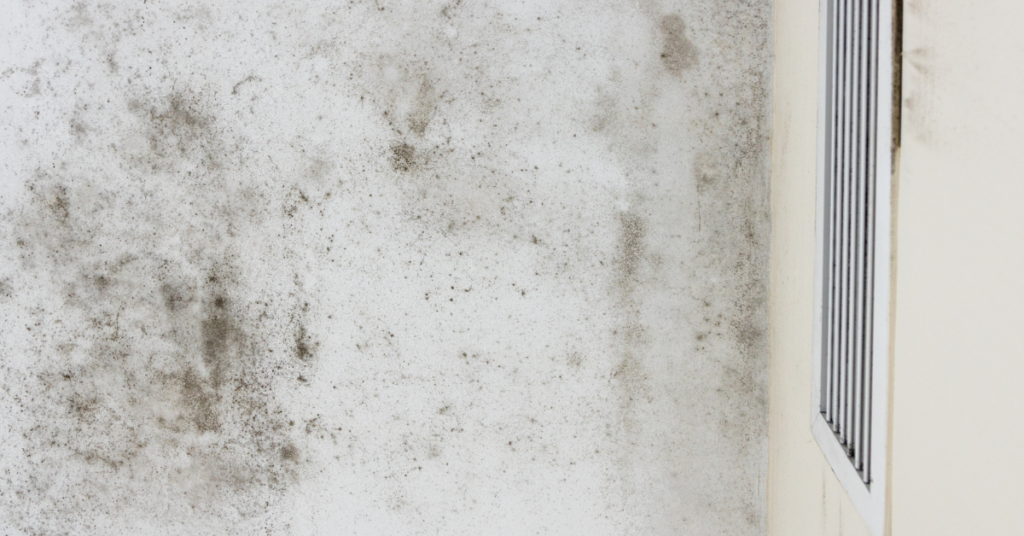Storms can bring more than just wind and rain—they often leave behind hidden dangers, like mold. When water invades your home during a storm, mold can begin to grow within 24-48 hours. Left unchecked, it can damage your property and affect your health. Knowing how to identify and prevent mold after a storm is critical in protecting your home or business.
Here’s what you need to know about post-storm mold, how to spot it, and what steps to take to keep it from becoming a bigger problem.
How to Identify Mold After a Storm
Mold thrives in dark, damp, and humid environments—conditions that are common after a storm, especially when flooding or leaks occur. Mold can grow in visible areas, like walls or ceilings, but it can also hide behind wallpaper, in insulation, under flooring, or inside air ducts.
Here are the key signs of mold growth after a storm:
- Musty Odor: One of the first clues that mold is present is a persistent, musty smell. Even if you don’t see mold, trust your nose. A moldy odor means moisture has lingered long enough for mold to start growing.
- Visible Spots or Stains: Mold may appear as black, green, or white spots or fuzzy patches on surfaces like walls, ceilings, or even furniture. Look carefully in areas that may have been exposed to water, such as basements, attics, or around windows.
- Warped or Discolored Materials: Water-damaged areas like drywall, wood, or flooring often become breeding grounds for mold. If you see any swelling, warping, or peeling, mold may be growing beneath the surface.
- Health Symptoms: Mold exposure can cause health risks, including allergic reactions or respiratory issues. If you or family members experience sneezing, coughing, headaches, or skin irritation after a storm, mold could be the culprit.
Why Mold Is a Post-Storm Hazard
When storms hit, water damage often follows. Whether from a roof leak, flooding, or broken windows, even a small amount of moisture can create the perfect environment for mold to flourish. Mold can spread quickly, and it doesn’t take much water to create a big problem.
More than just damaging your property, mold can pose serious health risks. Prolonged exposure to mold can lead to respiratory issues, particularly for those with asthma or allergies, and cause more severe reactions in people with weakened immune systems.
Steps to Prevent Mold After a Storm
Protecting your home from water damage and preventing mold growth is always easier—and cheaper—than removing it once it has taken hold. Here are the most effective steps you can take after a storm to stop mold in its tracks:
- Act Fast: Mold can begin growing within 24-48 hours of water intrusion. The sooner you dry out your home, the less likely mold will develop. Remove any standing water as quickly as possible and use fans or dehumidifiers to help dry out affected areas.
- Check for Leaks and Water Damage: After a storm, inspect your home thoroughly for leaks or areas of water damage. Look for roof damage, broken windows, or leaks around doors and windows that could let moisture in.
- Remove Wet Materials: Any materials that can’t be dried within 48 hours should be removed. This includes carpets, insulation, drywall, or furniture that has absorbed water. Mold can grow on these materials rapidly, so disposing of them is often the safest option.
- Clean and Disinfect: Once the affected areas are dry, clean them with soap and water, then disinfect using a solution of one cup of bleach to one gallon of water. This can help kill any mold spores before they spread.
- Improve Air Circulation: Good airflow helps dry out wet areas. Open windows, use fans, and run air conditioning or dehumidifiers to reduce indoor humidity levels.
- Monitor Humidity Levels: Mold thrives in humid conditions, so aim to keep your indoor humidity below 60%. Use a humidity meter to track levels and run a dehumidifier if necessary.
When to Call a Professional
Even with prompt action, mold can still become a problem after a storm. If the water damage is extensive or mold appears in hidden or hard-to-reach areas, it’s crucial to call a local restoration business. Working with local professionals has benefits. They understand the unique climate and building styles in your area, allowing them to assess the damage more accurately. They can provide a faster response, safely remove mold, and implement effective prevention measures tailored to your home or business, ensuring long-term protection.
Post-storm mold is a serious issue, but with swift action and the right preventive measures, you can protect your property and health. Remember, early identification and moisture control are key to stopping mold from becoming a costly and hazardous problem. If you need help addressing mold after a storm, don’t hesitate to contact professionals for safe and effective solutions.
By taking these steps, you can reduce the risk of mold damage and ensure that your home or business is restored to a healthy, safe condition.
Need expert help with water damage and mold after a storm? Contact us today at All About Restoration. We’re here to restore your home and peace of mind.

